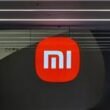Revolutionizing Oracle Bone Script Deciphering: A New Framework
Summary:
- Innovative Approach: Researchers from Fudan University introduce a novel interpretable oracle deciphering framework using radical and pictogram analysis.
- State-of-the-Art Performance: Achieves top-tier recognition accuracy on benchmark datasets and excels in zero-sample scenarios.
- Archaeological Impact: Provides interpretable analytical texts for undeciphered oracle bone scripts, paving the way for new archaeological insights.
The ancient Oracle Bone Script remains one of the earliest mature writing systems, posing significant challenges for archaeological deciphering due to its rarity and complexity. In a recent groundbreaking study, researchers from Fudan University presented a new interpretable oracle deciphering framework that demonstrates not only promising performance on public benchmark datasets like HUST-OBC and EV-OBC but also remarkable zero-sample deciphering capabilities.
Unveiling the Framework
The proposed method emphasizes the relationship between character shapes (radicals) and their meanings through an advanced visual language model. Unlike existing deep learning approaches, which often overlook the intricate connections between the visual and semantic aspects of oracle bones, this new framework integrates radical analysis with pictographic semantics.
Key Components of the Framework
-
Gradual Training Strategy: The model undergoes a systematic training process, progressing from recognizing radicals to conducting deeper pictogram analyses. This structured approach enables the seamless transition from character shapes to their meanings.
-
Pictogram Deciphering Oracle (PD-OBS) Dataset: To support the model’s learning, the researchers developed an extensive dataset comprising 47,157 Chinese characters combined with corresponding oracle images and relevant annotations. This dataset is crucial for training visual language models tailored to oracle deciphering.
- Double Matching Mechanism: Introducing a "radar-pictogram double matching mechanism," the model enhances zero-sample deciphering performance. By filtering and ranking potential decipher candidates based on predicted radical labels and pictographic similarities, it increases accuracy, especially in scenarios with rare or undeciphered characters.
Recognizing Radicals
The framework’s first component focuses on radical recognition. Utilizing a spatial patch merge module, the model adapts to the unique visual features of the Oracle while predicting crucial information for downstream reasoning. This stage confirms the standardization of radical tags, significantly improving the model’s ability to distill information from the visual data.
Joint Radical-Pictogram Analysis
A noteworthy aspect of this study is the design of a rational glyph analysis trajectory. By correlating glyph structures (radicals) to their semantic meanings, the researchers utilize numerous radical analysis questions to train the model effectively.
In essence, radicals act as the backbone of semantic understanding in oracle bone script, enabling the model to conduct in-depth character analyses. Pictogram analysis supplements this by providing a more holistic view, ensuring comprehensive semantic predictions.
Robust Experimental Results
In evaluating the effectiveness of this framework, researchers conducted rigorous tests on both the HUST-OBC and EV-OBC datasets. They selected a diverse range of character categories to assess the model’s capabilities in zero-sample scenarios, utilizing Top-1 and Top-10 accuracy metrics as benchmarks.
Impressive Performance Metrics
- Top-10 Accuracy: The new framework outperformed all existing methods in terms of Top-10 accuracy, showcasing its capacity to generate high-quality candidate predictions.
- Zero-Sample Capabilities: Even with previously unseen characters, the proposed approach exhibited a 26.2% improvement in accuracy over the second-best method, underscoring its robustness in challenging scenarios.
Significance in Archaeology
The implications of this study extend beyond technological advancements. The framework’s ability to produce interpretable analytical texts for undeciphered oracle bone scripts holds the potential to revolutionize archaeological research. By providing clearer insights into undeciphered inscriptions, this research lays the groundwork for further exploration and understanding of ancient Chinese civilization.
Conclusion
This research represents a pivotal moment in oracle bone script deciphering. By bridging the gap between character forms and their meanings through a robust framework based on radicals and pictograms, the team at Fudan University has set a new standard in the field. The dual matching mechanism not only enhances model performance but also opens avenues for future archaeological discoveries. As the world seeks to decode ancient writings, this framework promises to be an invaluable resource for scholars and researchers alike.






